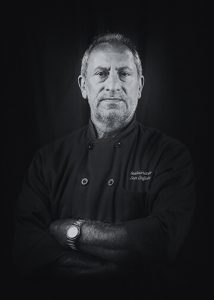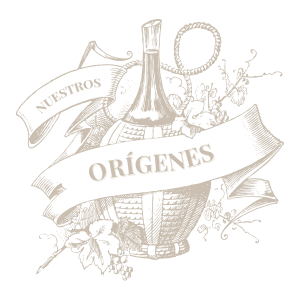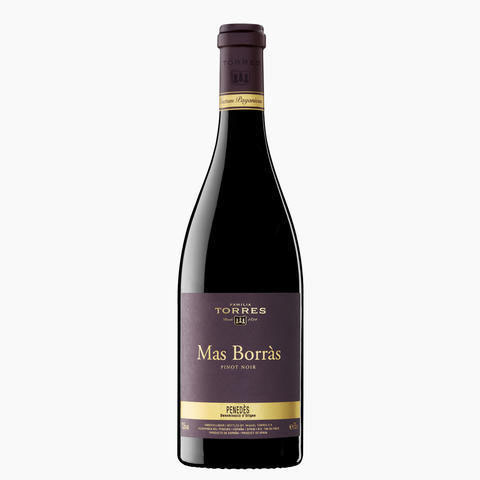
Marqués de Cáceres vineyards in Rioja
For years, Spain has taken a back seat to Italian and French wines. That all changed in the 1990s. In the course of the last 2 decades, Spain has become the most celebrated country in the world for its wines. Today, you’ll learn the story of how Spain has risen from the decimation of a civil war to become a world leader in wines. You’ll also discover why in Spain, you don’t order the wine by the grape, you order it by the region. If Spain’s sudden popularity & unique culture is a mystery to you, you’re in the right place because today we’re Exploring Spanish Wine Regions | Rioja & Marqués de Cáceres
CONTENT
- The mystery behind Spanish Wine revealed: Discovering Spanish wine regions
- Why in Spain, you order by the Region instead of the grape
- The story behind Marqués de Cáceres
- VIDEO | Marqués de Cáceres 50th Anniversary tribute
- Why Regional Pairing is significant in Spain & Chef Carlos’ Secret Recipe
- The Chef reveals the one thing you need to know about ordering Spanish wine
- VIDEO | Chef Carlos gets controversial about Spanish wines…..and won’t apologize
- FEATURED WINES of Marqués de Cáceres | I. Crianza Rioja II. Rioja Reserva III. Rioja Gran Reserva
Carlos Rivero had cooking in his DNA…. and wine in his blood.
Carlos Rivero’s passion for his Spanish culture is legendary in his adopted town of Valparaiso, USA. The story of this Chef is a good one. Nobody could have ever predicted his story as a young child growing up in the Galacian Wine Region of Spain. With a celebrated Chef as a father and a mother that cultivated vineyards on the family farm, Carlos was brought up with the Spanish tradition that sharing remarkable food and wine with family or friends is an expression of love.

The young Chef looked up to his father and wanted to be like him in every way. Chef Manuel Rivero Gonzalez’s fame as a Chef brought him to the different parts of Spain and abroad. While the young Chef had the advantage of inheriting his father’s recipes, Chef Rivero’s greatest gift to his son was his understanding of how each region’s culture, tradition, and techniques defined the unique food and wines of each region.
Like his father, Chef Carlos became renowned for his culinary skills and established his own restaurants in Madrid. Then, as fate would have it, Carlos found his greatest passion. Carlos Rivero fell in love with a beautiful American. He married the love of his life, moved to the United States, established Restaurante Don Quijote and the rest is history. The Spanish culture he brought to his adopted town helped define Valparaiso as a destiny for great food and wine.
The mystery behind Spanish Wine reveals itself through discovering Spanish wine regions

The culture & tradition of Marqués de Cáceres. Christina Forner’s Father, Grandfather, and Great Grandfather.
In Spain, you don’t order the wine by the grape, you order it by the region. While in countries like France and Italy, wine is defined by its grapes. Why the difference? The answer can be explained through Spain’s most common grape, the Tempranillo.
Most people associate the Tempranillo with Spanish wine, and more specifically, the Rioja region. This can be attributed to the remarkable wines of Marqués de Cáceres. When the Forner family returned from exile following the Spanish Civil War, they brought back with them the forward-thinking wine techniques they discovered in France.
With a blend of the best vine-growers and Tempranillo vineyards in La Rioja and a Bordeaux concept of wine production, Enrique Forner founded Marqués de Cáceres. The remarkable wines of the Forner family catapulted Spain into the mix with France and Italy as one of the world’s top producers of wine. The tempranillo soon became synonymous with Rioja.
![]()
In Spain, you don’t order the wine by the grape, you order it by the Spanish wine region.

Chef Carlos likes to use his Restaurante Don Quijote customers as a means of deciphering why you should order Spanish wine by the region instead of the grape. Many of his affluent customers are sophisticated wine drinkers that have experienced the finest tempranillo wines of Rioja. While exploring the diverse Spanish wines from the Don Quijote menu, they may choose a bottle of Tempranillo from another Spanish wine region.
The customer is left disappointed because they are expecting it to taste like a Rioja. While the wine is a grand reserva and produced from the finest techniques and uses ripened Tempranillo grapes from old vines, it is not a Rioja, nor does it taste like one!
A wine made of Tempranillo in Rioja will taste very different than a Tempranillo from LaMancha.
According to Chef Carlos, “Tempranillo is the most common grape in Spain. It is often associated with Rioja, but Spain is a diverse country. Every part of Spain has Tempranillo, but yet they taste very different. They even have different names for the grape because the grape differs from one region to the next. The Tempranillo grape adapts, over time, to the culture, climate, and soil of the region. Even though it’s the same grape, it will eventually adapt to the micro-climate”.
Factors have always been present in Spain… It just needed this!

No other nation in the world can match Spain’s diversity for food and wine. Indeed, Spain has captured the imagination of everyone from the most sophisticated pallet to a new generation of wine enthusiasts. So how did Spain’s status elevate to the highest peak? Chef Carlos believes much of the credit belongs to the resourcefulness and innovation of Enrique Forner. But according to the Chef, the Spanish have a long tradition of adapting culture and techniques.
Chef Carlos maintains that factors have always been present to produce the world’s best wine. It was just interrupted by the horrors of the Spanish Civil War. Fortunately, Enrique Forner tapped into a new school of winemaking while in exile. But like a great paella dinner, a great chef needs the finest ingredients.
Carlos believes Enrique was on a mission from God when he returned to Rioja. Just look at the factors in Rioja and you just might think Carlos is right.
To be called the world’s finest wine requires this…. and the Rioja wine region has it.

Spain has more land under vineyard than any other country in the world, and much of that land is old vines that have very low yielding crops that produce flavored concentrated grapes.
It’s also the second-highest elevation in Europe after Switzerland. The high elevation allows the grapes to fully ripen despite Spain’s full sun and intense heat. In most regions around the world, the sun’s heat causes the grapes to bake which creates high sugar levels. However, Spain’s high altitude allows the grapes to cool down at night and maintain the perfect balance of acid.
According to Chef Carlos, “The soil, weather, and even culture (tradition) make a difference in what the final wine tastes like. Tradition is the aging process, techniques, picking method, harvest, and how it’s processed. It is why regional pairing is so significant in Spain.



Why pairing is significantly tied to the Spanish wine region
The history, culture, and tradition define the food and wine. Spanish food and wine have evolved together. Just try a manchego tapa and a glass of Rioja. Now try sipping a glass of wine while looking at the hillside at the vineyards and the peaks.
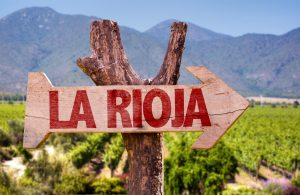
It’s also why regional pairing is so significant in Spain. In Spain, food and wine have evolved around the culture and techniques of the region. They go hand-in-hand. Each Spanish region has a story; each Spanish wine region has a tradition. No other nation in the world can match Spain’s diversity for food and wine. Spain was blessed by God!

Chef Carlos believes God loves Spanish people so much, he created the perfect conditions for the perfect wines. The factors have always been present in Spain, but war is hell and the devil oppressed God’s vineyards. This all changed in 1968, when Enrique Forner brought his family home to Spain and established Marqués de Cáceres.
Happy 50th Anniversary to Marqués de Cáceres

Enrique Forner, who founded the winery in 1970, learned the wine trade from his father, who in turn had learned from his father and grandfather.
Today, Cristina Forner manages the winery with the pride, experience, and tradition of one of the great Spanish families for which high-quality wine has never known boundaries. Marqués de Cáceres wines enjoyed in over 120 countries.
While Cristina had the advantage of inheriting her father’s culture, tradition, and techniques, she continues the evolution of Marqués de Cáceres and has established a policy of investing in technology and innovation.
Indifferent to the passing fashions which distort winemaking from time to time, Christina continues her father’s spirit and commitment… offering the consumer a wine that they can enjoy and share with their friends and loved ones.
Spanish Wine Regional Pairing
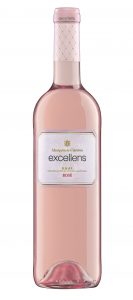
WINE: Marqués de Cáceres Excellens Rosé
FOOD: Gambas a la Riojana (Shrimp Rioja Style)

Confessions of a Chef | Carlos secret recipe revealed
“I created this recipe for my restaurant. I was home with friends drinking wine and I planned to cook shrimp a different way. But this time I added flour and white wine and it became a signature dish. It was inspired by the Spanish wine region of Rioja.
INGREDIENTS (Serves 4)

2 pounds medium-size shrimp, shelled and deveined
4 cloves garlic, crushed
2 tablespoons Spanish olive oil
1 tablespoon fresh chopped parsley
½ cup Rioja white wine
½ tablespoon flour or corn starch
¼ teaspoon sweet Spanish paprika (salt to taste)
Cornstarch
PROCEDURE
- Heat the oil in a skillet. Add the shrimp and garlic. Sauté for 3 minutes.
- Add salt, half of the parsley, and the paprika. Stir until the paprika dissolves in the oil.
- Stir in the wine, bring to a boil and remove from heat to a serving plate.
- Garnish with remaining parsley.
Click the menu to subscribe to future blogs.
The Chef reveals the one thing you need to know about ordering Spanish wine.
![]()
Here is Chef Carlos’s tip for the day!
In Spain, the wines aging process is identified as:

Crianza– the first level of Spanish wine aging. It comes with a minimal of 2 years of age with 6 months in oak barrels
Reserva- the second level of Spanish wine aging is 3 years and 1 year in oak barrels
Gran Reserve- the third level of Spanish wine aging is 5 years in oak barrels
When ordering wine, this identification will quickly allow you to distinguish the level of aging that is critical to the taste of the wine. At Restaurante Don Quijote, we describe Marqués de Cáceres’ Rioja as remarkable, more remarkable, and most remarkable!
…and here are Chef Carlos recommendations for each level of Marqués de Cáceres. 1) Crianza 2) Reserva 3) Gran Reserva wines.
- Marqués de Cáceres Rioja Crianza (Remarkable)
- Marqués de Cáceres Rioja Reserva (More Remarkable)
- Marqués de Cáceres Rioja Gran Reserva (Most Remarkable)
In the United States, ordering a Reserva is a ploy. For instance, a California Reserva might indicate a very good wine but lacks any real meaning. Conversely, in Spain, it has legal significance and a very specific set of laws.

Buy Wine Direct from Marqués de Cáceres
Shop Online – Free Shipping
(Over € 200/$234)
Order it here…. Marqués de Cáceres
Pay Winery Direct Prices w/ proceed to support future episodes of… “SPANISH WINE REGIONS”
Chef Carlos gets controversial about Spanish wines…..and won’t apologize.
Watch the Video that has everyone talking!
Watch it here.
Subscribe to Future Articles & Videos
Footage provided by & special thanks to Marqués de Cáceres, Vineyard Brands, Jano, LLC, Republic National


Crianza Rioja
Attractive color with luminous highlights. Soft spice and refined oak on the nose with a depth of jammy red berry fruits. Luscious and intense on tasting with pleasant tannins that mingle with fresh and mature fruit. Finishes with delicious, long-lasting flavors.

RIOJA CRIANZA 2016

Marqués de Cáceres
2016 Rioja Crianza Awards
- 91 POINTS – James Suckling Report 2019
- 90 POINTS– Vinous 2019
- 90 POINTS – Gourmets Guide 2020
- 92 PUNTOS – Proensa Guide 2020
- 93 POINTS – Decanter 2019
- 90 POINTS – Tim Atkin Rioja Special Report 2020
2016 Rioja Crianza Awards
- GOLD MEDAL – Shanghai Wine Awards 2019
- 90 POINTS– Tim Atkin Rioja Special Report 2019
- 93 POINTS – Gourmets Guide 2019
- 90 POINTS – El País Guide 2019
- 90 POINTS – Proensa Guide 2019
- GOLD MEDAL – Mundus Vini 2019

100% manual, parcel by parcel.
The grapes are de-stemmed and crushed. Alcoholic fermentation at controlled temperatures starting off at 50ºF to reach 82ºF. Prolonged skin contact maceration up to 20 days. Malolactic fermentation in stainless steel tanks. Once this process has finalized, the wines are put into barrels for aging with racking every six months.
12 months in French (60%) and American (40%) oak barrels. 2-3 years average AGING IN BOTTLE 1 year minimum before release

How to pronounce “Marqués de Cáceres Rioja Crianzaorder”
Rioja Reserva
85% Tempranillo, 10% Garnacha Tinta, 5% Graciano
Dense, dark ruby color. Refined and complex bouquet with a hint of cherry, vanilla, and soft toasted notes. Balanced in the mouth where silky, well-defined tannins combine with luscious flavors to reveal a pleasant fullness. This Reserva follows firmly in the footsteps of the previous 2012 vintage that won excellent awards.
Serve at 62ºF.
RIOJA RESERVA 2014
![]()
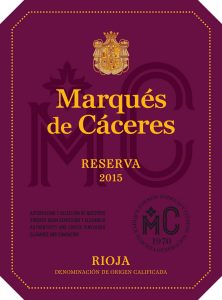

Marqués de Cáceres
Rioja Reserva Awards
![]()
VINTAGE 2015
- 95 POINTS – Guía Proensa Guide 2020
- 95 POINTS – Guía Gourmets Guide 2020
- 92 POINTS – El País Guide 2020
- GOLD MEDAL – Mundus Vini 2020
- 93 POINTS – Rioja Special Report Tim Atkin 2020

VINTAGE 2014
- 92 POINTS – James Suckling Report 2019
- GOLD MEDAL – Shanghai Wine Awards 2019
- 90 POINTS – Vinous 2019
- 96 POINTS – Proensa Guide 2019
- 95 POINTS – Gourmets Guide 2019
- 92 POINTS – Vinos ABC Guide 2019
- 91 POINTS – El País Guide 2019

Selection of parcels from 25-35 year-old vineyards, located in Rioja Alta (85%)
and Rioja Alavesa (15%). Low Yields of 35HL/ha (2.6 tons/acre) on average.
Harvested by hand, meticulously deciding the optimal harvesting moment for each
plot and each variety. 100% manual, parcel by parcel.
VINIFICATION
The grapes are de-stemmed and crushed. Alcoholic fermentation at controlled temperatures, starting off at 50°F to reach 82°F. Prolonged alcoholic maceration with the skins up to 25 days to extract more color, aromas, and tannic structure. Malolactic fermentation in stainless steel tanks. Once this process has finalized, the wines are put into barrels for aging with racking every 6 months.
TOTAL TIME IN BARREL
20 months in French oak barrels split equally between brand new barrels and
two & three-year-old barrels.
AGING IN BOTTLE 2 years minimum before release.
How to order it with Spanish elegance

Rioja Gran Reserva
This wine is exclusively from old vines (85% Tempranillo and 15% Graciano and Garnacha Tinta) and is aged up to 26-28 months in oak and up to 4 years in bottle. Produced only from vintages classed as “excellent” or “very good”.
Dark color with a hint of brick-red on the edge. Superb complexity on the nose with balsamic notes and refined oak. Full in the mouth with a depth of mature plums, sweet spice, and roasted coffee beans. Still fresh and discreetly lively, promising excellent potential for aging. Delicious and full with superb length. This Gran Reserva refreshes with the character our DO’s traditional style.
RIOJA GRAN RESERVA

side, again reflective of the year. Blackberry, plum and toast flavors remain on stage through a dry finish with simmering tannins. Drink through 2028.”
Marqués de Cáceres
Rioja Gran Reserva Awards
VINTAGE 2011
- 92 POINTS – James Suckling Report 2019
- 92 POINTS – Vinous 2019
- 95 POINTS – Gourmets Guide 2019
- 93 POINTS – Vinos ABC Guide 2019
- 92 POINTS – El País Guide 2019
- 92 POINTS – Proensa Guide 2019
- GOLD MEDAL – Rioja Masters 2018

VINTAGE 2010
- 91 POINTS – James Suckling
- 97 POINTS – Proensa Guide 2017
- 96 POINTS – Gourmets Guide 2017
- 94 POINTS – Special Report Tim Atkin Rioja 2017
- 97 POINTS – Proensa Guide 2018
- GOLD MEDAL – Mundial of Tempranillo 2017
- 91 POINTS– Wine Enthusiast April 2018

GRAPE HARVEST
100% manual, parcel by parcel in 15 kg boxes.
The grapes are de-stemmed and crushed. Alcoholic fermentation at controlled temperatures, starting off at 50°F to reach 82ºF. Prolonged alcoholic maceration with the skins up to 30 days to extract more color, aromas, and tannic structure. Malolactic fermentación in new French oak barrels or in stainless-steel tanks, depending on the batches. Once this process has finalized, the wines are put into barrels
for aging- with racking every six months.
TOTAL TIME IN BARREL
24-26 months, depending on the origin of the vineyards and if the new French oak barrels are being used for their first or second wine.
AGING IN BOTTLE
4 years minimum before release.


How to pronounce it in Spanish. Show your class!
Discover Spanish Wine Regions | Last word and what’s next!
We hope you enjoyed exploring Rioja and the wine regions of Spain. We invite you to raise your glass and congratulate Marqués de Cáceres as they celebrate their 50th Anniversary. The world is a better place for knowing Enrique Forner…much, much better! Show him your respect with a bottle of Marqués de Cáceres Rioja Gran Reserva. Salud!
On behalf of my co-host, Chef Carlos Rivero, thank you for letting us share our passion for Spanish wine. We hope you join (Subscribe) our next adventure when Carlos and I discover the Spanish wine region of Cataluna. Our special guest? Familia Torres.

Discover Spanish Wine Regions: Chef Carlos Rivero & Jim Jano –Subscribe to future articles
Meet Christina Forner… President of Marqués de Cáceres

BIO: Carlos Rivero was born in Pontevedra, Spain in a small village tucked into the lush green mountains of the region of Galicia. Following the big footsteps of his father, a celebrated Chef in Spain and abroad, Carlos spent his early years in Madrid as an apprentice Chef. In 1975, he opened his own restaurant/cafe in the Tetuan neighborhood of Madrid where he worked as a chef until he fell in love with a beautiful American and followed her to the United States in 1978. He opened Restaurante Don Quijote in 1985 in downtown Valparaiso, USA. His passion for his Iberian culture, food & wine inspires the unique Don Quijote culinary and wine experience. While maintaining a traditional Spanish Restaurant, his forward-thinking ideas have made his restaurant a destination for foodies, wine enthusiasts, and music lovers in Chicago and the midwest region. The Don Quijote Foundation he established offers numerous Spanish scholarships every year and raises $40,000 annually for local charities. Carlos is the host and serves as the food & wine expert for the blog series “Exploring Spanish Wine Regions”. Subscribe Free
Subscribe https://lp.constantcontactpages.com/su/M3BEvBs/Explore









